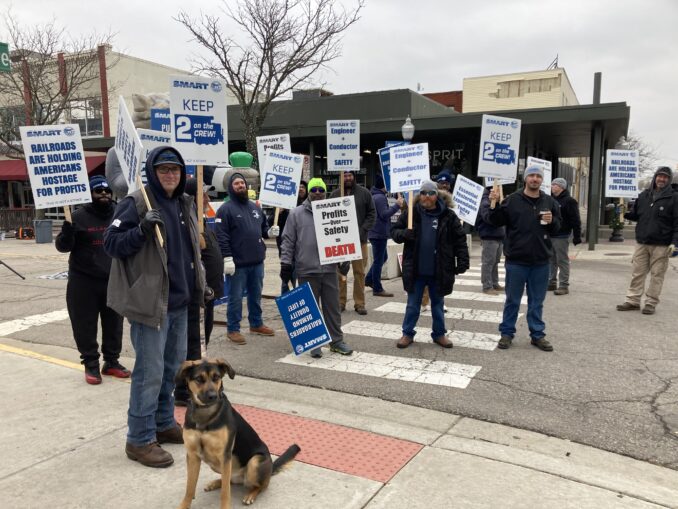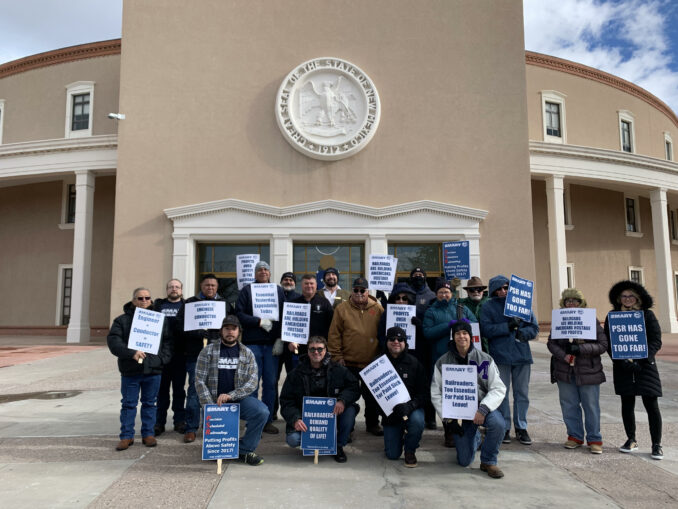Freight workers union calls 2022 Rail Solidarity Rally
Santa Fe, New Mexico
Rail union conductors and supporters gathered outside the New Mexico Roundhouse Tuesday, Dec. 13, despite 15 F wind chills, to demonstrate against the corporate freight push to run one-person trains, which will endanger the lives of freight engineers, rail workers and the communities that freight trains traverse nationally.

Royal Oak, Michigan
SMART-TD (Sheet Metal, Air, Rail and Transportation Workers) union members rallied in multiple cities Dec. 13, as the Federal Railroad Administration (FRA) held a public hearing on a safety proposal for a two-person train crew requirement. Railroad corporate bosses oppose the rule and are pushing to run megatrains with only one engineer.
The demonstrations called for paid sick days and drew attention to the dangers of the cost-cutting scheme known as “Precision Scheduled Railroading.” Congress passed a bill to impose a contract on rail workers that contains no paid sick days and does nothing to address huge scheduling problems that negatively affect workers’ health and family lives. President Joe Biden signed the bill.
Rail union members protested in Denver; Galesburg, Illinois; Des Moines, Iowa; Royal Oak, Michigan; Minneapolis; Sparks, Nevada; Columbus, Ohio; Salt Lake City; and Cheyenne, Wyoming; as well as Santa Fe.
On the picket line, retired conductors told stories of keeping engineers awake on long runs, of being forced to work while sick and of deaths due to unsafe conditions. As freight rail workers are prevented from taking a day off under the federally enforced contracts, union retirees turned out nationally to represent SMART-Transportation Division. SMART-TD is the largest of the 12 unions representing freight rail workers, with 450 locals representing railroad conductors and engineers. (smart-union.org/news/)
The FRA has extended the period to accept public comments on the proposed two-person train crew rule through Dec. 21. Comments may be submitted through Dec. 21 to docket FRA-2021-0032 at regulations.gov/.
Martha Grevatt contributed to this article.

Santa Fe, New Mexico

